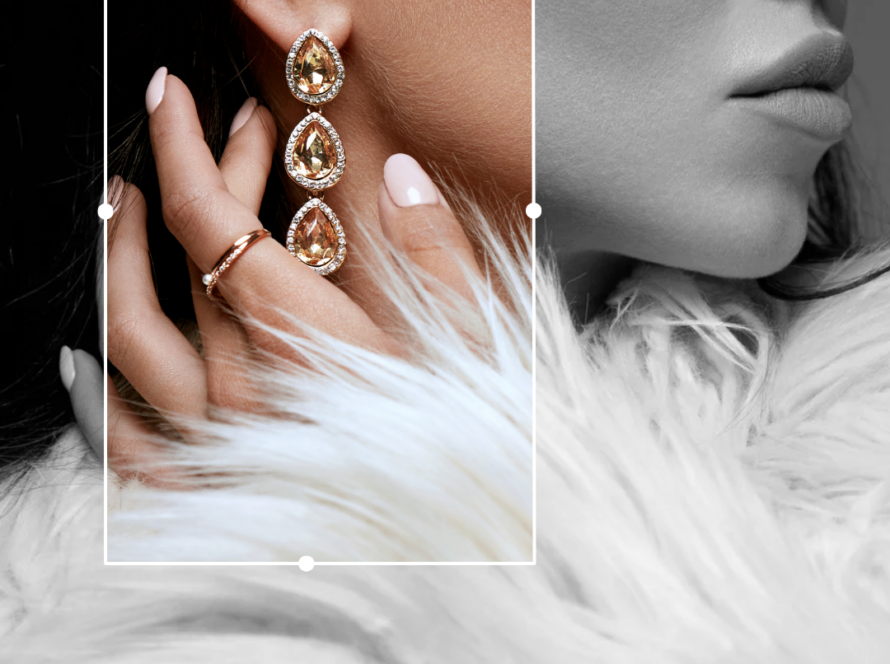Jewelry has captivated people for centuries, representing beauty, love, status, and tradition. Behind the scenes, however, creating and selling these treasured pieces is no small feat. Jewelers operate in a competitive industry that demands precision, artistry, and business acumen.
While there are many challenges in this field, the main one lies in balancing artistry with customer expectations. Let’s explore why this challenge stands out and how jewelers navigate it, along with other hurdles they face daily.
1. Balancing Artistry and Market Trends
At the heart of every jeweler’s work is creativity. Designing a stunning ring or crafting a unique necklace involves a deep understanding of materials, techniques, and aesthetics. Yet, this artistic vision must align with customer preferences and market trends.
For example, while a jeweler might want to explore avant-garde or intricate designs, customers often lean toward timeless classics or trendy minimalism. The challenge lies in staying true to their creative identity while producing pieces that resonate with their audience.
Solution: Many jewelers strike this balance by creating a diverse portfolio. They offer both classic designs to meet market demand and custom or one-of-a-kind pieces that showcase their artistic flair.


2. Maintaining Quality While Managing Costs
Jewelry, especially pieces crafted with precious metals and gemstones, requires the highest standards of quality. Customers expect durability, shine, and flawlessness, and jewelers must meet these expectations while keeping their costs under control.
Sourcing high-quality materials like conflict-free diamonds, certified gemstones, and ethically mined metals can be expensive. Add the labor-intensive craftsmanship required to create intricate designs, and the margins can quickly become tight.
- Solution: To address this, jewelers often build strong relationships with trusted suppliers, invest in efficient production techniques, and educate customers about the value behind their pricing.
3. Building Trust and Transparency
Jewelry purchases are deeply personal and often significant financial investments. Customers need to trust that what they’re buying is authentic and of the promised quality. For jewelers, establishing this trust requires transparency at every step—from sourcing materials to explaining design processes.
With increasing awareness around ethical sourcing, customers also want to know that the jewelry they’re buying is sustainable and conflict-free.
Solution: Certifications like GIA for diamonds and Fairmined for gold help jewelers reassure customers. Offering clear explanations about pricing, origins, and craftsmanship builds credibility and strengthens customer relationships.
The main challenge for a jeweler is balancing artistry with customer expectations, but it’s clear that this is just one piece of a complex puzzle.
4. Competing in a Crowded Market
The jewelry industry is highly competitive, ranging from global luxury brands to independent artisans. Standing out in such a saturated market is one of the most pressing challenges for any jeweler.
With online shopping on the rise, competition is no longer limited to local jewelers. Customers can easily compare prices, designs, and reviews from anywhere in the world. This accessibility forces jewelers to continuously innovate and provide a unique value proposition.
- Solution: Many jewelers use storytelling to differentiate themselves. By highlighting the inspiration behind their designs, the craftsmanship involved, or their commitment to sustainability, they create an emotional connection with customers.
5. Keeping Up with Technology
The jewelry industry is evolving rapidly, with technology playing a major role. Techniques like 3D printing, computer-aided design (CAD), and virtual try-ons have revolutionized how jewelry is made and sold.
While these advancements offer exciting opportunities, they also require jewelers to invest time and resources in learning and adopting new tools. Jewelers who resist change risk falling behind competitors who embrace technology.
Solution: Forward-thinking jewelers stay updated by attending industry workshops, investing in cutting-edge equipment, and collaborating with tech-savvy designers.

6. Managing Customer Expectations
Jewelry is often tied to emotional milestones—engagements, weddings, anniversaries, and other significant events. Customers come with high expectations, and meeting them can be a daunting task.
Custom orders, in particular, present unique challenges. A customer might envision a design that’s difficult to execute within their budget or timeline. Miscommunications about materials, sizes, or finishes can lead to dissatisfaction.
- Solution: Clear communication is key. Successful jewelers involve customers in the design process, provide realistic timelines, and set clear expectations about costs and outcomes.
7. Adapting to Trends Without Losing Identity
Jewelry trends are constantly shifting. One season might favor bold statement pieces, while another leans toward delicate minimalism. Jewelers must stay relevant by adapting to these trends without compromising their signature style.
This challenge is especially acute for independent jewelers, who often rely on their unique designs to stand out.
- Solution: Many jewelers embrace flexibility, creating trend-inspired collections alongside their signature pieces. This approach allows them to cater to trend-conscious buyers while staying true to their artistic identity.
8. Navigating Seasonal Demand
Jewelry sales tend to peak during specific times of the year, such as the holiday season, Valentine’s Day, and wedding seasons. For jewelers, managing inventory, production, and staffing during these busy periods can be challenging.
During quieter months, maintaining steady cash flow and sustaining interest from customers requires strategic planning.
- Solution: Many jewelers diversify their offerings, adding repair services, custom designs, or even jewelry-care products to generate consistent revenue year-round.
9. Educating Customers About Value
Unlike other products, jewelry value isn’t always immediately apparent. Customers may question why a diamond ring costs thousands of dollars or why handmade jewelry is priced higher than mass-produced alternatives. Educating them about the craftsmanship, quality, and ethical sourcing behind a piece is crucial.
- Solution: Jewelers often use storytelling, workshops, and detailed product descriptions to highlight the effort and value behind each piece. Building a well-informed customer base leads to greater appreciation and loyalty.
10. Emotional Pressure of Perfection
Finally, the personal and emotional nature of jewelry adds another layer of pressure for jewelers. Whether crafting an engagement ring or restoring a family heirloom, the stakes are high. A small flaw can lead to disappointment, tarnishing the jeweler’s reputation.
- Solution: Experience, meticulous attention to detail, and a commitment to quality help jewelers meet these expectations. Many also offer warranties or guarantees to provide customers with peace of mind.
Final Thoughts
The main challenge for a jeweler is balancing artistry with customer expectations, but it’s clear that this is just one piece of a complex puzzle. From sourcing materials and navigating trends to building trust and managing emotions, jewelers face a unique combination of creative, technical, and business challenges.
Despite these hurdles, jewelers continue to craft stunning pieces that bring joy, mark milestones, and carry legacies forward. Their dedication ensures that jewelry remains a timeless symbol of beauty and meaning for generations to come.





